- JST Home
- /
- Strategic Basic Research Programs
- /
 PRESTO
PRESTO- /
- project/
- Quantum Cooperation between Materials and Information/
- [Quantum Cooperation] Year Started : 2023
[Quantum Cooperation] Year Started : 2023
Shun Uchino
Formulation of strongly interacting open quantum systems and its application to cold-atom simulators
Grant No.:JPMJPR2351
Researcher
Shun Uchino
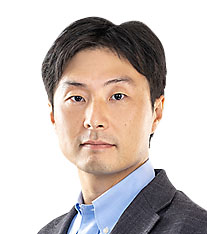
Associate Professor
Faculty of Science and Engineering
Waseda University
Outline
Understanding dissipation in quantum many-body systems is now a crucial theme in terms of fundamental physics and quantum information science. By means of a nonequilibrium quantum field theory, this project provides a theoretical framework for strongly interacting quantum many-body systems with dissipation due to couplings to environments. Furthermore, by applying this developed theory to quantum simulators with ultracold atomic gases, the project aims to establish a novel concept in quantum condensed matter physics.
Yujiro Eto
Time-resolved Raman spectroscopy unconstrained by the Fourier limit using intense quantum light
Grant No.:JPMJPR2352
Researcher
Yujiro Eto
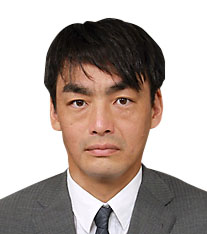
Associate Professor
Graduate School of Science
Kyoto University
Outline
I develop a high-power light pulse pair in which the fluctuations of light are strongly correlated in both the time and frequency domains. Using the developed light source, we will demonstrate nonlinear Raman spectroscopy that can simultaneously realize the incompatible properties of ‘ultrafast time resolution provided by an ultrashort pulse light source’ and ‘high wavenumber resolution provided by a narrow linewidth light source’. This will make it possible to accurately detect molecular structural changes in ultrafast transient phenomena that cannot be observed with conventional techniques.
Tomoki Ozawa
Development of AMO quantum technology using quantum geometry and topology
Grant No.:JPMJPR2353
Researcher
Tomoki Ozawa
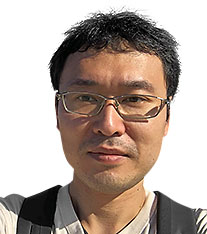
Professor
Advanced Institute for Materials Research
Tohoku University
Outline
Geometrical and topological properties of quantum states describe how quantum states change in a suitable parameter space. In this project, I theoretically explore quantum technology utilizing geometrical and topological properties of quantum states in AMO (atomic, molecular, and optical) systems. In particular, I aim to develop novel methods to control quantum states in the platforms of quantum computing, and I plan to explore the intersection between quantum metrology and topological phases of matter. In parallel, I also investigate geometry and topology of quantum many-body systems using quantum technology.
Yuichi Kasahara
Developing electrical detection technique for emergent quasiparticles in quantum spin liquids
Grant No.:JPMJPR2354
Researcher
Yuichi Kasahara
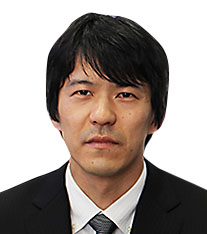
Professor
Faculty of Science
Kyushu University
Outline
Non-abelian anyons are key quasiparticles for establishing topological quantum computations. In this project, we will develop electrical detection technique for non-abelian anyons emerging in quantum spin liquid states. This research aims to explore the fundamental technologies for realizing innovative quantum control, including topological quantum computations.
Ryo Sasaki
Chiral quantum networks based on integrated phononic circuits
Grant No.:JPMJPR2355
Researcher
Ryo Sasaki
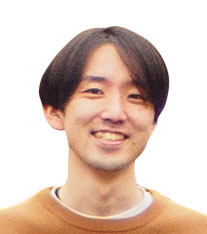
Special Postdoctoral Researcher
Center for Quantum Computing
RIKEN
Outline
Microwave devices have a fundamental limitation in miniaturization due to their long wavelength. However, phonons with the same frequency have a very short wavelength, so devices using phonons can be miniaturized and integrated. In this research, I develop integrated circuits of phonons in the microwave region, using the waveguide structure of phonons. By enhancing coupling with condensed matter and quantum systems through effects derived from the circuit structure, I will realize quantum phononic circuits with chirality.
Takuro Sato
Strongly correlated spintronics in chiral organic conductors
Grant No.:JPMJPR2356
Researcher
Takuro Sato
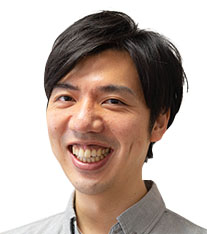
Assistant Professor
Institute for Molecular Science
National Institutes of Natural Sciences
Outline
This project aims to generate a new interdisciplinary research field ranging from strongly correlated electron systems to spintronics, by working with an organic superconductor with chiral symmetry. In particular, I will first investigate a microscopic origin of the significant spin polarization recently observed in the chiral superconductor on a quest to develop a novel quantum control of the spin degrees of freedom. In addition, I will develop a new method for synthesizing organic heterostructures with a clean interface and demonstrate a highly efficient spin transfer between different superconductors.
Ching-Kai Chiu
Mastering Quantum Complexity: The Path to Scaling and Controlling topological Majorana bound states
Grant No.:JPMJPR2357
Researcher
Ching-Kai Chiu
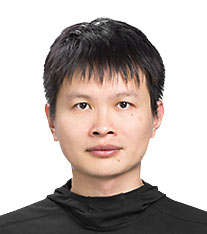
Senior Research Scientist
Center for Interdisciplinary Theoretical and Mathematical Sciences
RIKEN
Outline
This research proposal aims to investigate Majorana bound states (MBSs) in vortices within a 3D topological superconductor. The focus is on validating the existence of MBSs, studying the constraints to their scalability, and examining their longevity with topological protection and qubit readout. These studies are the fundamental steps toward topological quantum computing. We also address the control of MBSs movement and the reading of quantum information stored in MBSs. The proposal focuses on the platform of Abrikosov vortices in a 3D topological superconductor and the methodologies to examine Majorana spin properties, advancing the understanding of the potential of MBSs in topological quantum computing.
Hideki Narita
Creation of innovative quantum control technology using hybrid superconductors
Grant No.:JPMJPR2358
Researcher
Hideki Narita
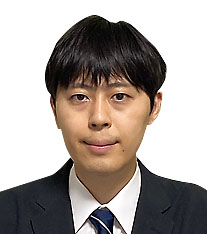
Associate Professor
Research Center for Materials Science
Nagoya University
Outline
I will explore novel electronic phases that could lead to innovative quantum technologies, using superconductors with simultaneous breaking of time-reversal and space-inversion symmetries. In this research, I will control the phase in hybrid superconductors, where ferromagnets, superconductors, and heavy metals are asymmetrically arranged, leading to the application of topological properties to quantum control technology and the conversion to technology.
Tokiro Numasawa
Non-equilibrium open system dynamics of strongly correlated systems and quantum information
Grant No.:JPMJPR2359
Researcher
Tokiro Numasawa
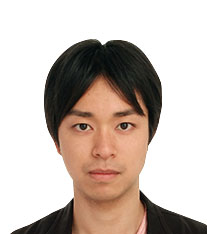
Assistant Professor
The Institute for Solid State Physics
The University of Tokyo
Outline
By investigating the non-equilibrium open-system dynamics of basic models in strongly correlated systems (such as the SYK model), we explore the connection between non-equilibrium open-system dynamics and quantum information. Furthermore, through the relation between SYK circuits and the SYK model, we intend to study the relationship between quantum algorithms and the dynamics of quantum materials. Additionally, we will address impurity problems as examples of open systems strongly interacting with their environments. By drawing insights from black hole physics, we aim to elucidate the role of open-system-specific dynamics and quantum information.
Kaoru Mizuta
Efficient versatile quantum algorithms based on nonequilibrium quantum many-body physics
Grant No.:JPMJPR235A
Researcher
Kaoru Mizuta
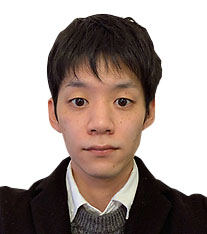
Research Associate
Graduate School of Engineering
The University of Tokyo
Outline
Simulating quantum systems is one of the most promising applications of quantum computers. While a variety of long-term quantum algorithms like quantum singular value transformation have been developed for this purpose, there is much room for acceleration by reflecting the physics of the target systems. In this project, I establish efficient quantum algorithm by unifying nonequilibrium quantum physics and quantum computation. Versatile phenomena under minimal restriction in nonequilibrium setups, such as locally-interacting systems and Floquet systems, will lead to more efficient quantum algorithms for quantum many-body systems.
Tomoyuki Yokouchi
Development of quantum skyrmions for novel quantum bits
Grant No.:JPMJPR235B
Researcher
Tomoyuki Yokouchi
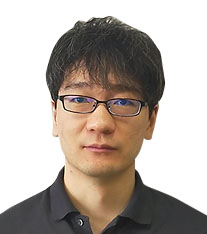
Unit Leader
Center for Emergent Matter Science
RIKEN
Outline
In this project, we aim to demonstrate the quantum nature of skyrmions by observing their macroscopic quantum tunneling. For this purpose, we will focus on skyrmions in the vicinity of a quantum phase transition point, in which quantum fluctuations are critically enhanced. We will excite the dynamics of skyrmions by using an alternating magnetic field or an alternating current. Then, by analyzing the temperature dependence of the relaxation time of the skyrmion dynamics, we attempt to observe the macroscopic quantum tunneling of skyrmions.
Hac Huong Thu Le
Generation and manipulation of large-scale and defect-free ultra-cold atom array by meta-optics
Grant No.:JPMJPR235C
Researcher
Hac Huong Thu Le

Senior Researcher
Research Institute for Hybrid Functional Integration
National Institute of Advanced Industrial Science and Technology
Outline
This project aims to establish a meta-optics platform for the deterministic preparation of large-scale and defect-free ultra-cold atom arrays toward many-body systems for quantum information processing and quantum measurements. Our method exploits the spatiotemporal arbitrary control of the light wavefront by metasurfaces - flat optical elements composed of scattering nanostructures - for magneto-optical cooling, trapping and assembly of individual atoms. The complete and independent control of the amplitude, frequency, phase and polarization states of light at sub-wavelength spatial resolution by metasurfaces enable the generation of scalable optical trap arrays with high fidelity of single atom trapping and controllable geometries. Furthermore, we also target to integrate metasurface flat-optics and MEMS-based ion-pump technique to realize atom arrays on a chip-scale device.













